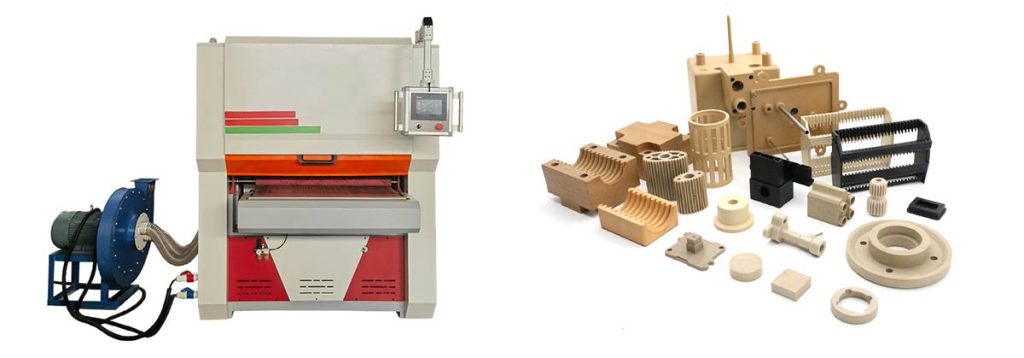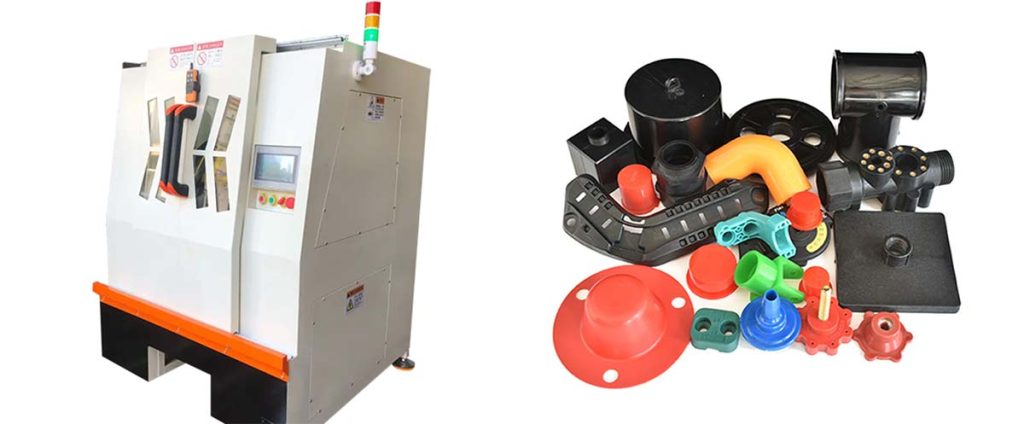

Many people notice fine cracks appearing soon after finishing their plastic parts by using plastic buffing. This issue can frustrate even experienced technicians. Understanding why cracks form during plastic buffing and how to address them makes a real difference. For example, researchers found that lowering pressure and adjusting stand-off distance during plastic buffing can reduce the average number of cracks from 10.5 to just 4. Simple changes in plastic buffing technique give users reliable ways to protect their work.
Key Takeaways
- Surface cracks appear as fine lines on plastic parts after buffing and weaken the material if not caught early.
- Cracks form due to high pressure, heat, residual stress, chemical exposure, and poor design features like sharp corners.
- Controlling buffing speed, pressure, and using the right compounds helps prevent overheating and surface damage.
- Stress relief treatments like annealing reduce internal stresses and lower the chance of cracks during finishing.
- Good design with rounded edges and uniform thickness spreads stress evenly and reduces crack risk.
Cracks After Plastic Buffing
What Are Surface Cracks?
Surface cracks are small, visible lines or fissures that appear on the outer layer of plastic parts. These cracks often develop after finishing processes like plastic buffing. Technicians can spot them through visual inspection, either with the naked eye or by using optical devices such as microscopes. Sometimes, a dye penetration test helps highlight these defects, making them easier to see. The cracks differ in length, width, depth, and orientation. Their appearance depends on how well the surface structure can handle stress. Optical micrographs and microscopic images often reveal these cracks as fine scratches or lines. Advanced tools like scanning electron microscopes (SEM) or Raman spectroscopy can measure the depth and chemical changes in the affected area. These methods show that cracks usually start in a weaker subsurface zone, which is only a few nanometers deep. This zone cannot dissipate stress as well as the stronger bulk material underneath. When light hits these cracks, it scatters, making the damage more noticeable.
Tip: Regular inspection with a microscope or dye test helps catch surface cracks early, before they spread and weaken the plastic parts.
Why Cracks Form?
Cracks form during plastic buffing for several reasons. The most common cause is localized plastic deformation. When hard particles from the buffing compound or the plastic buffing machine press into the surface, they create stress points. These points can lead to the formation of cracks, especially if the force is too high. The size and depth of the cracks depend on the normal force, the hardness of the material, and its ability to resist fracture. If the plastic parts come from processes like injection molding, they may already have internal stresses. Buffing can make these stresses worse, causing cracks to appear. Environmental factors, such as temperature changes or exposure to chemicals, can also weaken the surface and make it more likely to crack. Each of these factors works together, making it important to control the buffing process and inspect the finished parts carefully.
Causes of Cracks
Residual Stress
Residual stress builds up inside plastic parts during manufacturing processes such as injection molding. These stresses remain trapped in the material even after it cools. When a technician uses a plastic buffing machine, the heat and friction can release this stress, causing cracks to form on the surface. Fatigue crack growth tests on metals show that interfacial residual stresses act as extra loads. For example, in titanium alloys, residual stress caused a 31% decrease in the crack growth exponent and a 40% increase in the crack growth rate. This means cracks can grow faster and become more severe when residual stress is present. In plastics, similar stress release can lead to sudden surface damage, especially if the part has not been properly annealed or stress-relieved before finishing.
Note: Always consider stress relief treatments after injection molding to reduce the risk of cracks during plastic buffing.
Chemical Exposure
Chemicals can weaken the surface of plastics and make them more likely to crack. Solvents, cleaning agents, or even residues from the plastic buffing machine can react with the polymer chains. This reaction breaks down the surface, making it brittle. For example, if a technician uses a solvent to clean a part before buffing, the chemical may remain on the surface. When the buffing process begins, the heat and friction can drive the chemical deeper into the material, causing micro-cracks to appear. Over time, these small cracks can grow and lead to visible damage. Chemical exposure also increases the risk of burn marks, which further weaken the surface and make cracks more likely.
Improper Buffing
Improper use of the plastic buffing machine often leads to surface damage. High speed, excessive pressure, or using the wrong buffing compound can generate too much heat. This heat can cause burn marks and soften the plastic, making it easier for cracks to form. For example, if a technician presses too hard or holds the part in one spot for too long, the surface temperature rises quickly. The softened area cannot handle the stress, and cracks develop as the material cools. Using a compound that is too abrasive can also scratch the surface, creating weak points where cracks start. Proper training and careful adjustment of buffing parameters help prevent these issues.
- Tip: Use the lowest effective speed and pressure on the plastic buffing machine to avoid overheating and burn marks.

Design Issues
The design of plastic parts plays a major role in crack formation. Sharp corners, thin sections, and sudden changes in thickness create stress concentrations. These areas become weak points during plastic buffing. Studies on additive manufacturing show that design features like geometric restraint can cause cracks to form at specific locations. Optical microscopy measured the ratio of linear crack length to total crack length between 0.8 and 0.9, showing that design-induced restraint leads to severe cracking. Finite element simulations confirm that high stress at these points increases the frequency of cracks. The table below summarizes how different design issues influence crack formation:
| Design Issue / Cause of Crack | Example / Context | Influence on Crack Frequency / Nature |
|---|---|---|
| Sharp corners and thin sections | Plastic parts with abrupt geometry | Stress concentrates at corners, increasing the chance of cracks during plastic buffing. |
| Non-uniform ground settlement | Foundations, abutments, pillars | Uneven support causes cracks, showing how design affects crack frequency. |
| Casting in stages | Box girders webs | Shrinkage restrained by hardened material leads to vertical cracks, linking design to crack formation. |
| Increased shear or bending stress | Near supports or center of spans | Load paths and distribution in design influence where cracks appear. |
| Plastic shrinkage and thermal effects | Slabs, footpaths, bridge abutments | Rapid drying or massiveness causes cracks, showing design and environment interaction. |
Alert: Avoid sharp corners and sudden thickness changes in design to reduce stress concentrations and crack risk.
Environmental Factors
Environmental conditions have a strong impact on the risk of cracks during or after plastic buffing. Prolonged exposure to sunlight, high temperatures, and atmospheric chemicals can degrade the polymer structure. Microbial colonization forms biofilms on the surface, leading to enzymatic breakdown of the material. This process reduces the molecular weight and mechanical strength of the plastic, making it more likely to crack. For example, studies on PVC microplastics show that environmental exposure can reduce chemical oxygen demand removal efficiency by up to 35.5% and methane formation by up to 32.3%. The accumulation of short-chain fatty acids increases by as much as 272.7%. These changes weaken the plastic and make cracks more likely to form during finishing processes.
Tip: Store plastic parts in cool, dry, and clean environments to minimize environmental degradation before and after plastic buffing.
Preventing Cracks After Plastic Buffing
Control Buffing Parameters
Technicians can prevent cracks by carefully controlling the settings on the plastic buffing machine. The speed of the buffing wheel, the pressure applied, and the type of pad all play important roles. Most plastics respond best to moderate speeds, usually between 1000 and 3000 RPM. Excessive speed or pressure increases friction, which raises the surface temperature. High temperatures often cause burn marks and weaken the surface, making cracks more likely. Operators should use gentle, even pressure and move the buffing pad continuously across the surface. This approach prevents overheating and avoids creating weak spots. Selecting the right pad for the material also helps distribute force evenly and reduces the risk of damage.
Tip: Always allow the plastic part to cool between buffing passes. This simple step helps maintain surface integrity and prevents heat buildup.
Stress Relief Treatments
Residual stress from manufacturing, especially injection molding, can make plastic parts vulnerable to cracks during finishing. Stress relief treatments, such as annealing, help release these internal stresses. Annealing involves heating the plastic part to a specific temperature below its melting point, then allowing it to cool slowly. This process relaxes the polymer chains and reduces the risk of sudden cracking during plastic buffing. Many manufacturers schedule annealing as a standard step after injection molding and before any surface finishing. For complex shapes or thick sections, gradual heating and cooling work best to avoid introducing new stresses.
Note: Annealing not only prevents cracks but also improves the overall durability of the finished part.
Material and Compound Selection
Choosing the right materials and buffing compounds is essential for preventing surface damage. Some plastics, such as polycarbonate, are highly sensitive to aggressive chemicals like acetone, benzene, and toluene. These solvents can cause rapid cracking and should be avoided during cleaning or finishing. Instead, technicians should use mild agents such as isopropyl alcohol. When selecting a buffing compound, it is important to match the compound to the plastic’s hardness and sensitivity. Specialized compounds designed for plastics reduce the risk of scratches and burn marks. Protective coatings, such as hard or UV-resistant layers, add another level of defense against environmental stress and chemical attack. Regular maintenance and careful selection of cleaning products help sustain the surface quality of plastic parts.
- Use mild cleaning agents (e.g., isopropyl alcohol) instead of harsh solvents.
- Select buffing compounds formulated for plastics.
- Apply protective coatings to enhance resistance to cracks and burn marks.
Design Improvements
Good design practices can greatly reduce the risk of cracks after plastic buffing. Designers should avoid sharp corners, thin sections, and sudden changes in thickness. These features create stress concentrations, which act as starting points for cracks. Rounded edges and gradual transitions distribute stress more evenly across the part. For plastic parts made by injection molding, uniform wall thickness helps prevent internal stress buildup. Design teams often use simulation tools to predict where stress might concentrate and adjust the geometry before production begins. By addressing these issues early, manufacturers can produce parts that withstand the rigors of the plastic buffing machine without developing surface defects.
| Design Feature | Risk Level | Recommendation |
|---|---|---|
| Sharp corners | High | Use rounded edges |
| Thin sections | High | Increase thickness uniformly |
| Sudden thickness change | High | Gradual transitions |
| Uniform wall thickness | Low | Maintain throughout the part |
Environmental Controls
Environmental conditions, such as temperature and humidity, affect the likelihood of cracks and burn marks during and after plastic buffing. The optimal temperature for finishing most plastics ranges from 65°F to 75°F, with humidity kept below 60%. High humidity or temperature can weaken the surface and promote chemical reactions that lead to cracking. Clean, dry storage areas protect plastic parts from atmospheric chemicals and microbial growth. Technicians should monitor the environment in both the production and storage areas. Installing climate control systems and using protective covers for finished parts help maintain ideal conditions.
Alert: Never store plastic parts near sources of heat or chemicals. Proper storage extends the life of the surface finish and reduces the risk of cracks.
Quick Prevention Checklist

A well-structured checklist helps technicians and designers prevent surface cracks after using a plastic buffing machine. The following table summarizes essential steps, supported by specific recommendations and numerical guidelines:
| Checklist Item | Specific Guidance | Preventive Action |
|---|---|---|
| Mold draft angle | Insufficient draft angle causes surface scratches and cracks | Increase draft angle for smooth demolding |
| Ejector pin usage | If pin size cannot be increased, use more pins of the same size | Optimize ejector pin placement to reduce stress |
| Metal insert temperature | Low temperature of metal inserts causes cracks at start of operation | Preheat metal inserts before molding |
| Structural design | Maintain arc radius to wall thickness ratio at 1:1.7 | Design corners with circular arcs and correct ratio |
| Material selection | Use high molecular weight plastics; avoid mixing incompatible plastics | Choose appropriate raw materials |
| Injection parameters | High injection pressure or speed causes cracks | Reduce injection pressure and terminal speed |
| Mold condition | Cracks in mold cavity reflect on plastic parts | Regularly inspect and repair mold cracks |
| Moisture content | Excessive humidity in feed material causes defects | Dehydrate resin and limit recycled plastic usage |
| Temperature control | Low or uneven melt/mold temperature causes cracks | Raise and stabilize melt and mold temperatures |
Technicians can further reduce the risk of cracks by following these steps:
- Select plastic materials with good low-temperature resistance, such as polyethylene or polypropylene.
- Control the use temperature and avoid exposing parts to extreme cold.
- Handle and transport plastic parts carefully to prevent impact damage.
- Apply insulation wrapping or cold-proof coatings for added protection.
- Prevent contact with corrosive chemicals, including acids and alkalis.
- Inspect and maintain equipment, including the plastic buffing machine, on a regular schedule.
- Detect and address early signs of cracks through routine visual checks.
Tip: Consistent use of this checklist ensures that each stage, from design to finishing, supports the long-term durability of plastic parts.
Conclusion
A comprehensive approach helps reduce surface cracking after using a plastic buffing machine. Technicians should control buffing parameters, select proper materials, and improve part design. Quantitative data supports this method:
- Successive polishing with finer abrasives lowers surface damage.
- Mechanical-chemical polishing improves surface integrity.
- Measured intensity ratios show reduced damage depth.
These strategies work together to protect plastic parts. Regular process reviews and continued learning ensure lasting results.
